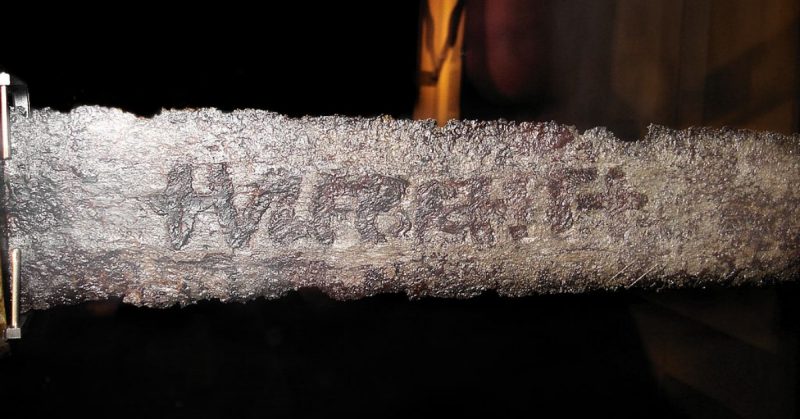Ulfberht: unique swords with the inscription +VLFBERHT+ on the blade, dated between the 9th and 11th centuries. In the Viking Age, the privilege of having such a sword belonged exclusively to the elite, because an Ulfberht sword’s unmatched strength could only be had at a high cost. The sharpness and durability of the blade made it possible to cut through bone or a lower-quality weapon with one blow.
The technology for making such swords was hundreds of years ahead of its time. The uniqueness of the Ulfberht was the use of crucible steel with a high carbon content, up to 1.2%.
Crucible steel was produced in India, Sri Lanka from about 300 BC, and later in Uzbekistan, Turkmenistan, and other Central Asian areas. Scientists analyzing the steel concluded that authentic Ulfberht swords originated in India.
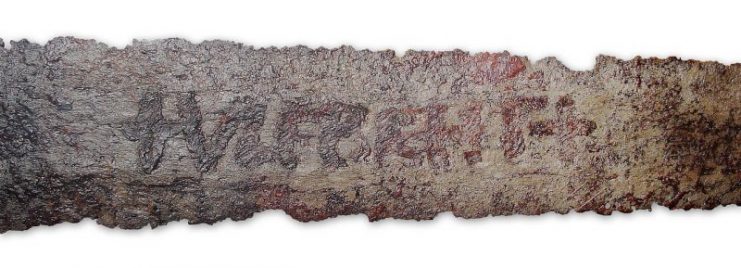
Before the discovery of the Ulfberhts, it was believed that the technology for hardening metal to such an extent originated during the Industrial Revolution. To do this, it is necessary to heat the metal to a temperature of 1,600° C. This indicates that the creators of Ulfberhts were about 800 years ahead of the Industrial Revolution with their methods for heating the metal to make the swords.
The inscription on the sword is located in the upper third of the dale of the sword, and is generally about 4.7-5.5 inches long.
Ulfberht swords’ grips differed in their outlines, but in most instances they were ornamented in an ethnically neutral geometric style such as with alternating strips of brass and red copper, supplemented with silver. These colored stripes gleamed, giving the sword a shimmering and precious appearance.
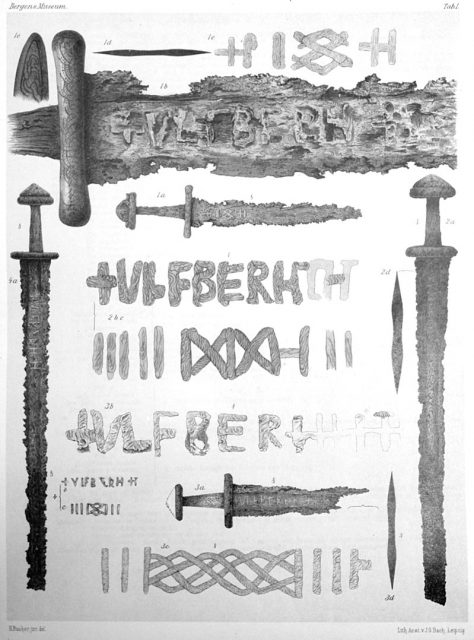
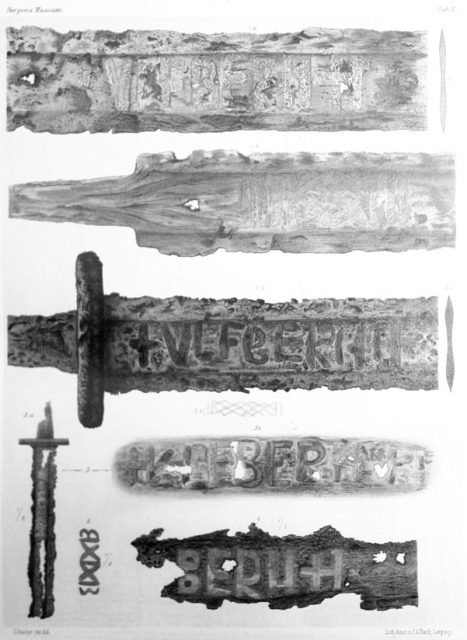
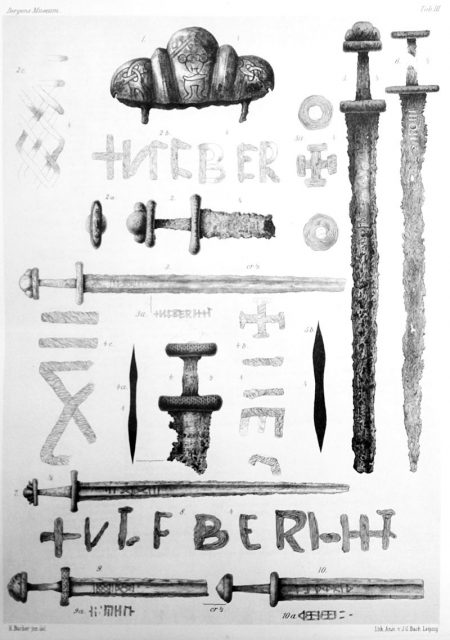
Making this type of sword required a division of labor, with the masters and their assistants working in the same place. Each stage of the preparation of the metal required great skills and was carried out by an individual. To this should be added the delicate work of the jewelry-trimmed handles and the inscription.
It is not yet known who or what “Ulfberht” was, or why this name is inscribed on many of these swords. One sword found in East Germany has a combination of the Vlfberht signature along with the Latin inscription “in nomine domini” (+ IINIOMINEDMN).

The earliest finds of Ulfberht swords are dated to AD 850, and at the present time 171 swords have been found. There are many with an uncharacteristic pattern, which indirectly indicates the export of blades to other countries. Many Ulfberht swords have been found that were made from cheap steel. This is probably because the Ulfberhts were in great demand and soldiers wanted to buy them cheap.
Norway and Finland are where the largest numbers of these swords have been found, with 25 swords found in each country. Another 20 swords were found in the territory of Ukraine and Russia. In all, most Ulfberhts have been found in northern Europe. In these regions, pagan burial rites involved the sword being buried along with its owner.
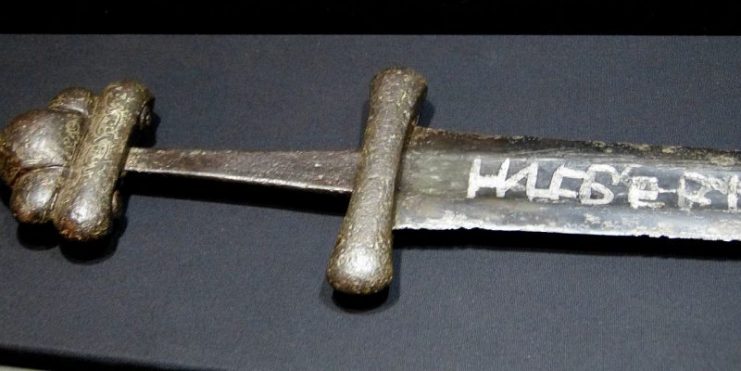
There are alternative theories about the origin of the sword. One is that the region of their origin is Austrasia. However, due to the shape of the name “Ulfberht” others assume the sword is of Frankish origin and that the swords were sold throughout Europe as far afield as Volga Bulgaria.
Robert Lehmann, a chemist at the Institute of Inorganic Chemistry at the University of Hannover, told the German newspaper Süddeutsche Zeitung that the material from which the sword was made was definitely not supplied from the East. He conducted a study of an Ulfberht sword found in 2012 in the gravel of the Weser River in Lower Saxony, northwest Germany.
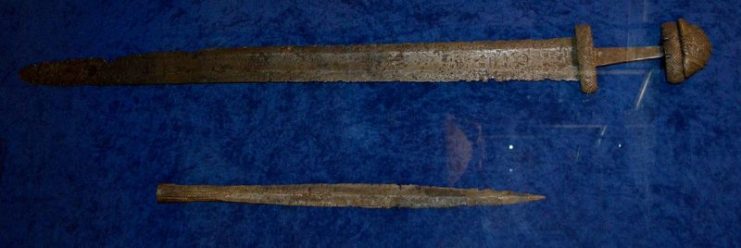
According to Lehmann, the sword contained a large amount of manganese, which refutes the version about raw materials being forged in the East. Garda was made from iron with a high arsenic content, indicating it’s a European feature. The handle of the sword was covered with a layer of lead and tin.
Lehmann determined that lead was mined in the Taunus region north of Frankfurt. One theory is that the sword was forged right near the place where its raw materials were extracted. In the Middle Ages, monasteries in the Taunus region participated in the manufacture of weapons.
Read another story from us: The Last Great Viking Invasion: Battles of Fulford and Stamford Bridge
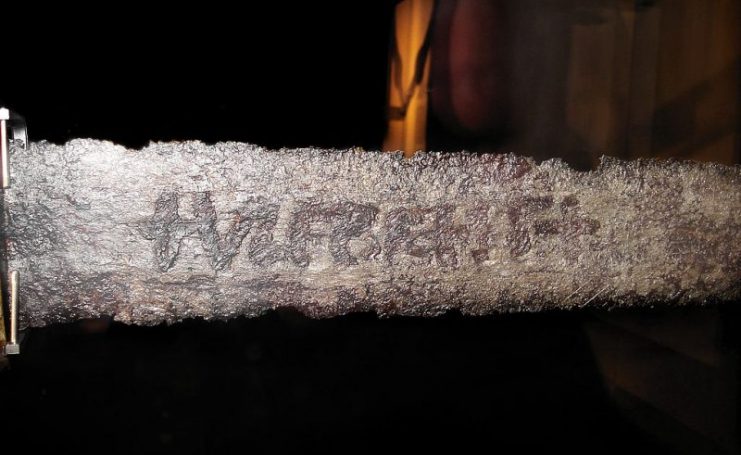
Following this information, the scientists decided to study the records of these monasteries to see if they could find a mention of the name Ulfberht. However, they could not find any information on it in the records, so the secret of the name of the sword remains unsolved.
